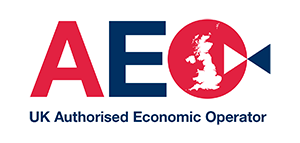
This week on the blog, our Customs Specialist Dan Balshaw walks us through customs origins.
In international trade, understanding the concept of origin is crucial for determining the applicability of preferential trade agreements and assessing the appropriate customs duties.
However, the term "origin" itself can be confusing, as it has two distinct meanings: origin (despatch) and origin (production).
In this blog post, we will:
- Explore the difference between these two origins
- clarify the concept of preferential origin
- Discuss the methods of proving preferential origin, such as the Registered Exporter System (REX) and the Certificate of Origin.
What does a customs broker really mean when they ask for the origin?
Origin (despatch) refers to the country from which the goods are sent or dispatched to another country. It focuses on the geographical location where the goods begin their journey, regardless of their manufacturing process.
On the other hand, origin (production/significant processing) refers to the country where the goods are manufactured or produced. It considers the place where the substantial manufacturing or processing activities take place, resulting in the creation of a new product.
When a broker asks you for the origin, it is the production origin they are discussing.
Is there a third type of origin?
The third type of origin is known as preferential origin. Preferential origin is a crucial aspect of international trade agreements. It determines whether goods are eligible for preferential treatment, such as reduced customs duties, under specific trade agreements or arrangements between countries.
Preferential origin criteria vary depending on the trade agreement, but they typically require goods to meet certain rules of origin, which are specific conditions that must be satisfied to qualify for preferential treatment.
It is always worth checking the UK Trade Tariff to see if your goods meet the rules of origin, especially preferential origin.
How do we prove preferential origin?
There are various methods for proving preferential origin. Two common approaches are the Registered Exporter System (REX) and the Certificate of Origin.
Registered Exporter System (REX)
REX is a system established by the European Union (EU) for determining the origin of goods exported from EU member countries and countries such as India who have adopted the DCTS scheme, rather than using FORM A's (certificates of origin). It allows exporters to self-certify the origin of their goods instead of obtaining a certificate of origin from an authorised body.
To benefit from preferential trade agreements, exporters must register in the REX system and provide accurate information about the origin of their goods.
Certificate of Origin
A Certificate of Origin is a document issued by an authorised body, such as a chamber of commerce, to certify the origin of goods. It provides evidence that the goods meet the specific origin criteria of a particular trade agreement.
The certificate typically includes details about the exporter, importer, description of the goods, and the country of origin. It must be completed accurately and in accordance with the rules specified by the relevant trade agreement.
Tips for checking your declaration
When submitting your import declaration and aiming to claim preferential origin, you'll notice it appearing in a few different areas.
The first is within your import entry data in element 4/17, which would be displayed as 300, indicative of tariff preference. Other codes that might appear include 200, 320, or even 400, which pertain to other arrangements like DCTS and preferential quotas.
The second hint would be visible in the associated documents section, in data element 2/3. You might encounter 'U' codes accompanied by a document number. U110 signifies the presence of a valid statement on the invoice. U111 indicates a long-standing statement, having a specified date range and applicable to several shipments. U112 refers to the importer's knowledge; it's crucial to note here that HMRC might request proof of the claimed preference in the years ahead.
Meanwhile, a 9001 is a signed invoice/supplier declaration required for certain countries such as Switzerland.
An additional code, C100, might appear followed by a REX number, primarily used to inform authorities of the REX number (if the exporter and importer are related parties).
Regarding the certificate of origin, you may encounter codes such as N861 among others, depending on the certificate's nature, goods, or country of dispatch.
Various methods including supplier declarations and certificates of origin exist to substantiate preferential status.
If you need to provide proof of origin for your overseas clients, we offer EUR1/Certificates of origin from the UK. Learn more about our EUR1 service here or get in touch with our experts.








